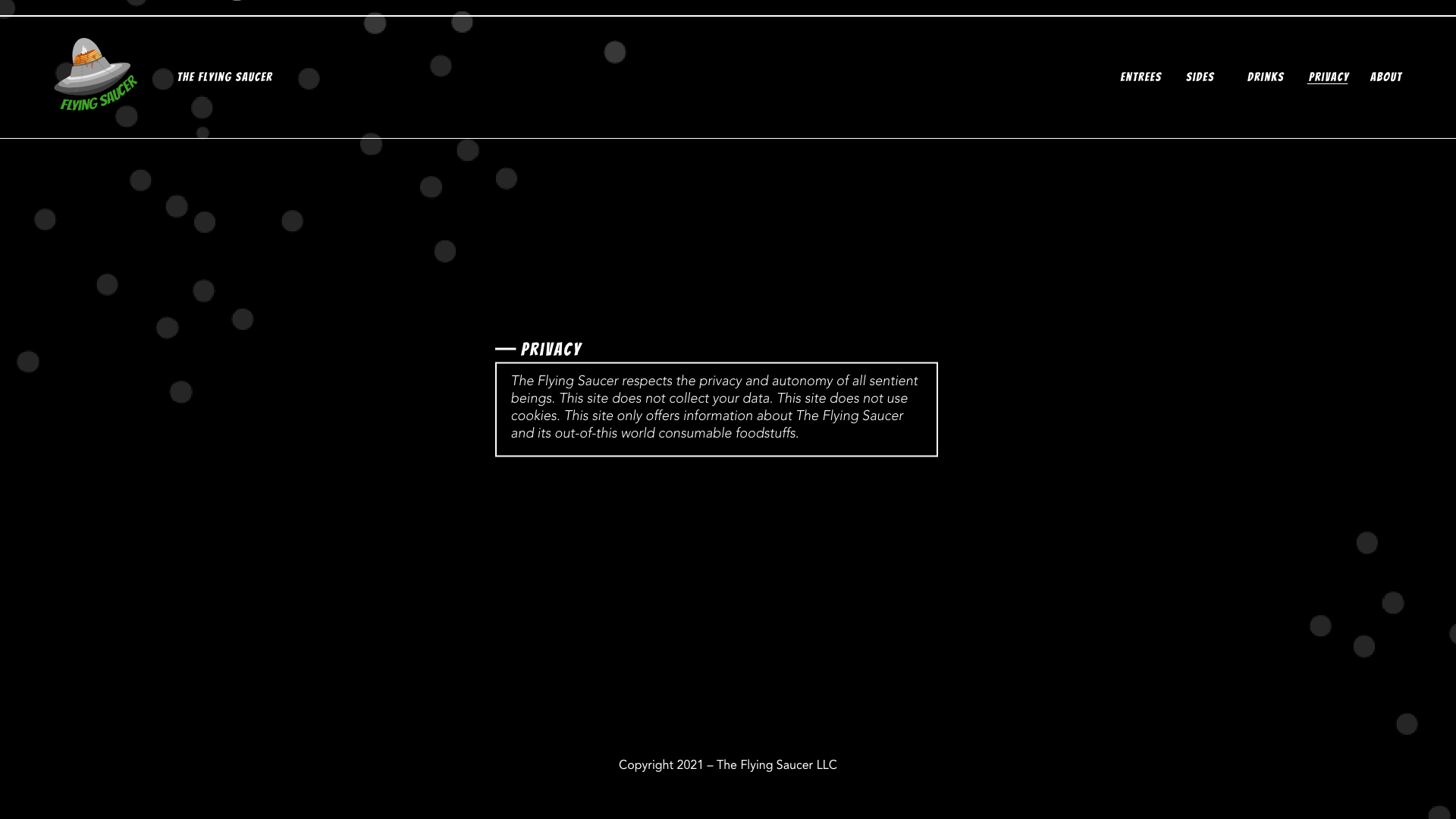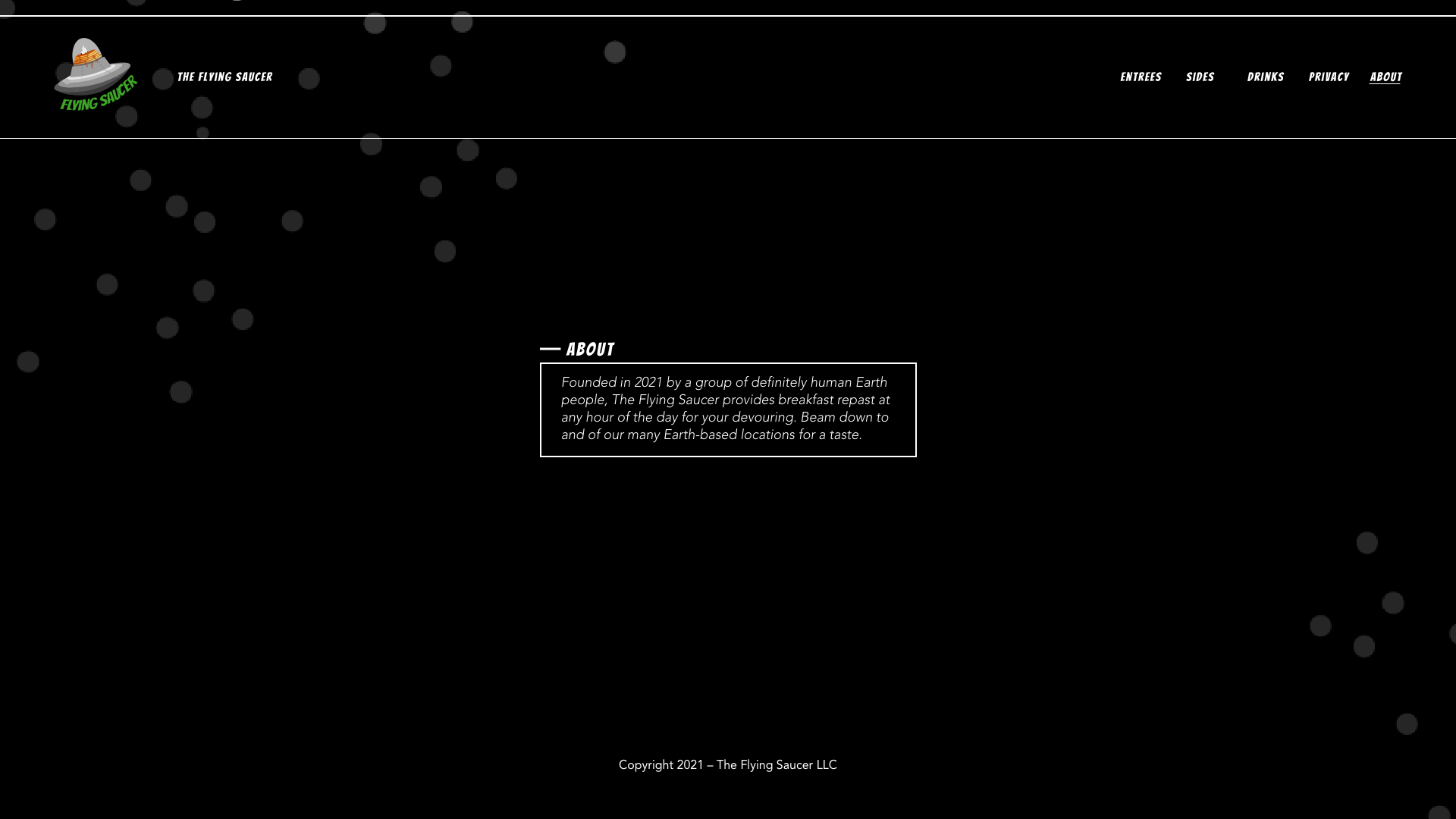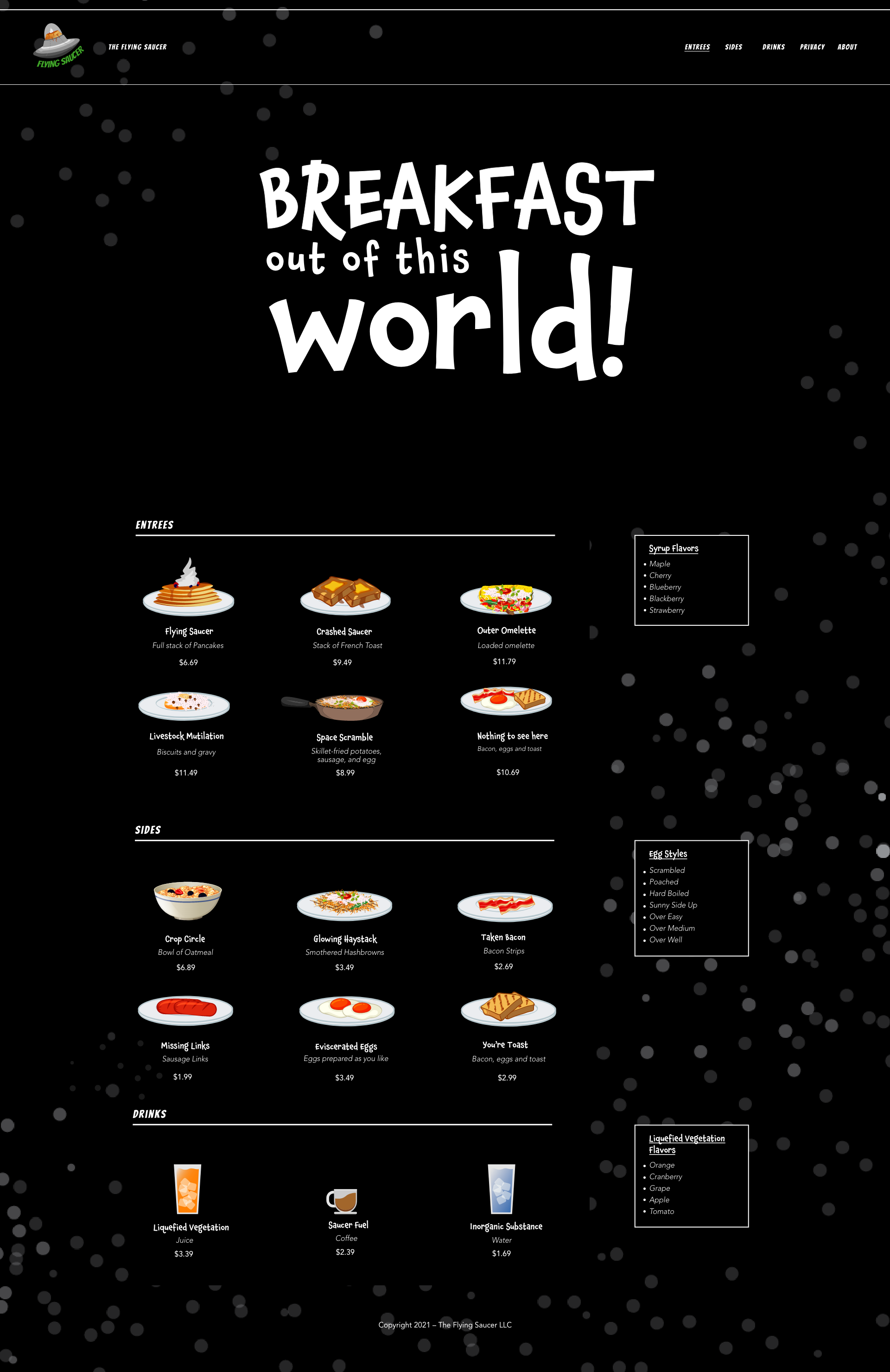Milestone 9 Requirements
Web Only
This textbook was authored for the CIS 400 - Object-Oriented Design, Implementation, and Testing course at Kansas State University. This section describes assignments specific to that course. If you are not enrolled in the course, please disregard this section.
General requirements:
You will need to follow the style laid out in the C# Coding Conventions
You will need to comment your code using XML comments
You will need to update your UML to reflect your current code
You will need to write appropriate unit tests for your code
Assignment requirements:
Create a new ASP.NET Core web project named Website using the Razor Pages option
Update the Layout, Privacy Page, and About page following the details laid out below
Create a static Menu class in your Data project
Update the Index page to dynamically list the full menu provided by the Data library
Update your UML Class Diagrams for:
- Data Project
- Website Project
(You don’t need to create a UML of your test project, though you can if you like)
Purpose:
This assignment is to get you started on creating a ASP.NET project, and using razor pages to implement a website.
Assignment Details
Begin by creating a new Razor Pages app named “Website” within your project. Then implement the requirements listed below.
Beyond these core requirements, you may add features and elements as you see fit. Moreover, you are encouraged to style the site using CSS.
Warning
The example website images are drawn from a prior semester’s project. You will need to create yours to reflect the information from this semester’s project!
Privacy Page
Modify the Razor page named Privacy.cshtml to meet the following guidelines. An example of what this might look like:
It should:
- Set the page title to “Privacy Policy”
- Render a
<h1>tag with the text “Gyro Scope Website Privacy Policy” or something similar. - Render the following privacy policy in a
<p>tag:
Gyro Scope respects the privacy of our diners. This site will not ask for your sign. This site does not collect your data. This site does not use cookies. This site only offers information about Gyro Scope restaurant and its menu selection.
About Page
Create a new Razor page named About.cshtml. It should meet the following guidelines. An example of what this might look like:
- Set the page title to “About”
- Render a
<h1>tag with the text “About Gyro Scope” - Render the following description in a
<p>tag:
Founded in 2022 by students of the CIS 400 course, Gyro Scope offers the finest and fastest mediterranean foods as suggested by the alignments of the stars.
Layout
Modify the existing (created by the template) _Shared/Layout.cshtml to (at a minimum):
- Set the page title to what is provided by the page with the string “- Gyro Scope” concatenated to the end
- Provide a navigation link to the new About page, as well as the Privacy page, and the Entrees, Sides, Drinks, and Treats on the index page.
- Change the copyright statement to “(c) 2020 - Gyro Scope LLC.”
Details
You can make the browser scroll to a specific section of the page by adding a # followed by the id of the page you want to scroll to. I.e. if you want to scroll to the tag <h1 id="entrees"> on the home page, the corresponding URL would be /home#entrees. With a normal anchor tag, this would be: <a href="/home#entrees">Entrees</a>.
If you are using the ASP tag helpers, the equivalent tag would be <a asp-page="Home" asp-fragment="entrees">Entrees</a>.
The navigation bar should look something like:
Create a static Menu class
In your Data project you should create a static class named Menu declared in the file Menu.cs which contains the following static properties:
Entreeswhich returns anIEnumerable<IMenuItem>containing an instance of all available entrees. For entrees with choices, i.e. your boolean ingredient properties, you only need to show the default choice.Sideswhich returns anIEnumerable<IMenuItem>containing an instance of all available sides. As each side has 3 different sizes, this collection should contain a small, medium, and large instance of each. Again, you only need to show the default version of each side.Drinkswhich returns anIEnumerable<IMenuItem>containing all available drinks. It should contain one of every flavor ofLibraLibation, but defaults for all other properties.Treatswhich returns anIEnumerable<IMenuItem>containing all available treats. If a treat has multiple sizes or flavors, one of each must be included. Use the default for any other properties.FullMenushould return anIEnumerable<IMenuItem>containing all of the items on the menu (basically, one of each of the items found in the categories above).
Index Page
Modify the existing Index.cshtml page to display the full menu of Gyro Scope according to hte guidelines that follow. An example of what this might look like:
Welcome Message
Add a first-level header (<h1>) identifying the page as “Gyro Scope”.
Under that, add a section greeting the customer with the message:
When the planets align!
List the Menu Categories
List the four categories of menu items (Entrees, Sides, Drinks, and Treats) using second-level header tags (<h2>).
List the Menu Items
Below each of the menu category headers, list the items in that category. Each item should be placed in a <div> with a class of "menu-item". The <div> should include, nested inside, the name of the item, its price, and its calories. If an item comes in multiple sizes, you will need to list the price and calories for each size.
You may use additional HTML elements to organize and present this information, and use CSS to style it as you see fit.
You should use the methods from your Menu class in the Data project to determine the entrees, sides, and drinks to display. This will mean using the Menu class in the model class for the index page, Index.cshtml.cs.
Submitting the Assignment
Once your project is complete, merge your feature branch back into the main branch and create a release tagged v0.9.0 with name "Milestone 9". Copy the URL for the release page and submit it to the Canvas assignment.
Grading Rubric
The grading rubric for this assignment will be:
20% Structure Did you implement the structure as laid out in the specification? Are the correct names used for classes, enums, properties, methods, events, etc? Do classes inherit from expected base classes?
20% Documentation Does every class, method, property, and field use the correct XML-style documentation? Does every XML comment tag contain explanatory text?
20% Design Are you appropriately using C# to create reasonably efficient, secure, and usable software? Does your code contain bugs that will cause issues at runtime?
20% Functionality Does the program do what the assignment asks? Do properties return the expected values? Do methods perform the expected actions?
20% UML Diagrams Does your UML diagram reflect the code actually in your release? Are all classes, enums, etc. included? Are associations correctly identified?
Warning
Projects that do not compile will receive an automatic grade of 0.



